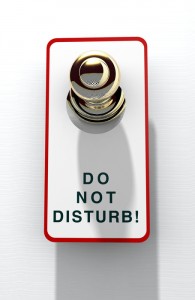
Effects...
Novelists and publishers get ‘writer’s block’, as do others, so it’s common amongst the human species as the time when our ‘batteries need re-charging'(!)
Robots can build cars, but they can’t design an A5 flyer. This is because any design is an expression of a human soul presented using elements such as fonts, colours, images and media. Any limitations that exist are in the form of a brief or specification. ‘Designer’s Block’ is kinda ironic in the sense that it defines the moment when we are struggling to do what what we are meant to excel at. It could be a design-concept for a website, logo, poster or sign, but you can either be struggling to make a start, or whatever you crank out is shit and you think you’re crap designer(!)
It happens to us all and it always strikes with little or no warning. Many factors can contribute to it such as stress-level, workload and deadlines, and I’ve tried to cover these within this post as best I can. For me, it generally hits when I have to name new businesses, organisations etc. I HATE doing it because it’s the complete starting point and everything is dependant on a unique solution NOW! Saying that, I always get there in the end, so keep that in mind when stressing yourself out.
Everything has to be UNIQUE! If I had a penny for every time people ask for something ‘unique’, I’d have a lot of pennies(!) However, as a designer, I agree every idea/design/concept has to be ‘unique’, but we just call it ‘creative’ instead. Doing this on a regular basis sometimes results in our mental mechanisms grinding to a halt or needing more of a push-start than usual aka ‘the block’. When you’re doing this day-in day-out, you have to reach some sort of compromise with your life-style to ensure you’re at your best when creating that shit-hot artwork(!)
‘Perfectionism’ is another cause. Go easy on yourself and trust your capabilities in designing something till its complete.
I’ve split my methods to avoid and/or combat ‘designer’s block’ into two types. The first, ‘real-time’, are ideas you can use there and then when you’re sat at your desk with your chin in your hand thinking you’re a loser(!) The second, ‘Long-Term Remedies’ are really required of you on a more routine basis to keep your mind sharp.
Real-Time Remedies
1. Take a Break, Outdoors(!)

Oxygen - proven health benefits(!)
2. Use a Thesaurus
I usually experience ‘the block’ when creating logos and names for clients. A quick remedy to this I found was to use an online thesaurus to generate new words, names and mottos to be used as part of the design. The sounds of the words can play a big part in the success of a logo or business so this method gives me further options to present to the client.
For example, if someone wanted to name a new restaurant ‘Bob’s Fast Food’, i’d further try different words like ‘Bob’s Eatery/Buffet/Pizzeria/Cafe’ and so on. Each different word offers a different out-look on the same thing. You get the point.
3. Research on the Net
This might sound obvious, but it’s all too easy to copy something that someone else has done. The internet provides us this opportunity in abundance. However, ‘designer’s block’ wouldn’t exist if this was the case, the whole point of being a creative designer is to use what we see to create something new. Therefore, the point is that we use the internet to research anything which can initiate that creative-flair and use it to create something..err..unique!
4. Music
To creative minds, music is a great source of inspiration and ideas. The term ‘music is what feelings sound like’ can be applied, in my opinion, to 90’s (and beyond) progressive trance and electronic music, of which I am STILL a flag-waver. On the flip-side, Hip-Hop as a genre is a favourite of mine too. Whatever you’re into, use it to stimulate your mind either as background music or a more concentrated dose of decibels, dancing and/or head-bopping(!)
5. Try a New Tool or Technique
It could be a new tool in your graphics software you haven’t used yet, or a new online tutorial teaching you a new technique, go-ahead, try it! I can remember learning about various techniques such as contouring elements and text, the shadow and mould tools and so on. They tend to open up new possibilities to your design work which you may not have tried before.
Long-Term Remedies
1. Sleep / ‘Power-Nap'(!)

(..already disturbed.)
2. ‘Zone-Time’
You might call it something else, but ‘the zone’ is that time, and mental state, when you are concentrating on your artwork and physically sat at your computer. It helps to allocate a few hours each day to this activity because it prepares your mind and body to get into ‘the zone’. It’s better to have a few hours each day rather than splitting your work into a more hap-hazard, or ‘as and when’, routine because you may actually concentrate more knowing this is the only time you have, on a given day, to develop your ideas. Switch off your phone, log out of Facebook, lock your doors, heck – even take your clothes off and sit there naked – whatever, only YOU can define ‘your zone’ and what helps you to concentrate better. Discipline yourself, and stick to your allocated ‘zone hours’ and the results will speak for themselves.
3. Eat Properly
Ever heard of ‘brain-food’? A healthy nutritional intake can boost your cognitive thought processes, short and long-term memory, mood and also logical thinking. Just make sure you eat regularly and vary your foods to keep the nutritional equilibrium. Blueberries and nuts are good for your short-term memory and salmon is great for your brain matter, mood and susceptibility of developing alzheimers or a stroke (also whilst offering the all-important Omega-3). Anti-oxidants are important to maintain a healthy immune system so go ahead, munch on that fruit and veg like you’re getting paid for it(!)
4. Get More Time and/or Money
If you’re feeling stressed or under-pressure because of a deadline, it’s simple – get it extended. Although some people may excel when under pressure, if it turns you into a shivering bone-sack, you may have to reach a compromise with your client. Same goes with money constraints, if you feel the money isn’t fair, your sub-conscious may steer you to create ‘average’, instead of ‘amazing’, design-work. Communicate with your client, don’t worry, most WON’T bite your head off(!)
5. Trust Yourself!
It’s easy to treat each design as the ONLY ever design designed by a designer(!) You want each and every one to be the best and so amazing that your client asks for your hand in marriage when he/she views it. Learn to trust your abilities and look at your past-work as examples of your fine craftsmanship. All of it started as a blank canvas and you got there in the end with a fine design everyone loved, so what the hell are you worried about THIS time around?
With athletes and sports-people, ‘routine training’ is more concentrated towards the physical condition of the body. Us designers, however, are the opposite. Our routine ‘training schedule’ should be to keep our brains in tip-top condition to offer us the mental state to create awesome artwork. We can use the gym to keep our bodies looking good!
Anyways, I’m off to the shops, I read somewhere that blueberries are good for your short-term memory, but can’t remember where.. ;)
Salute!


